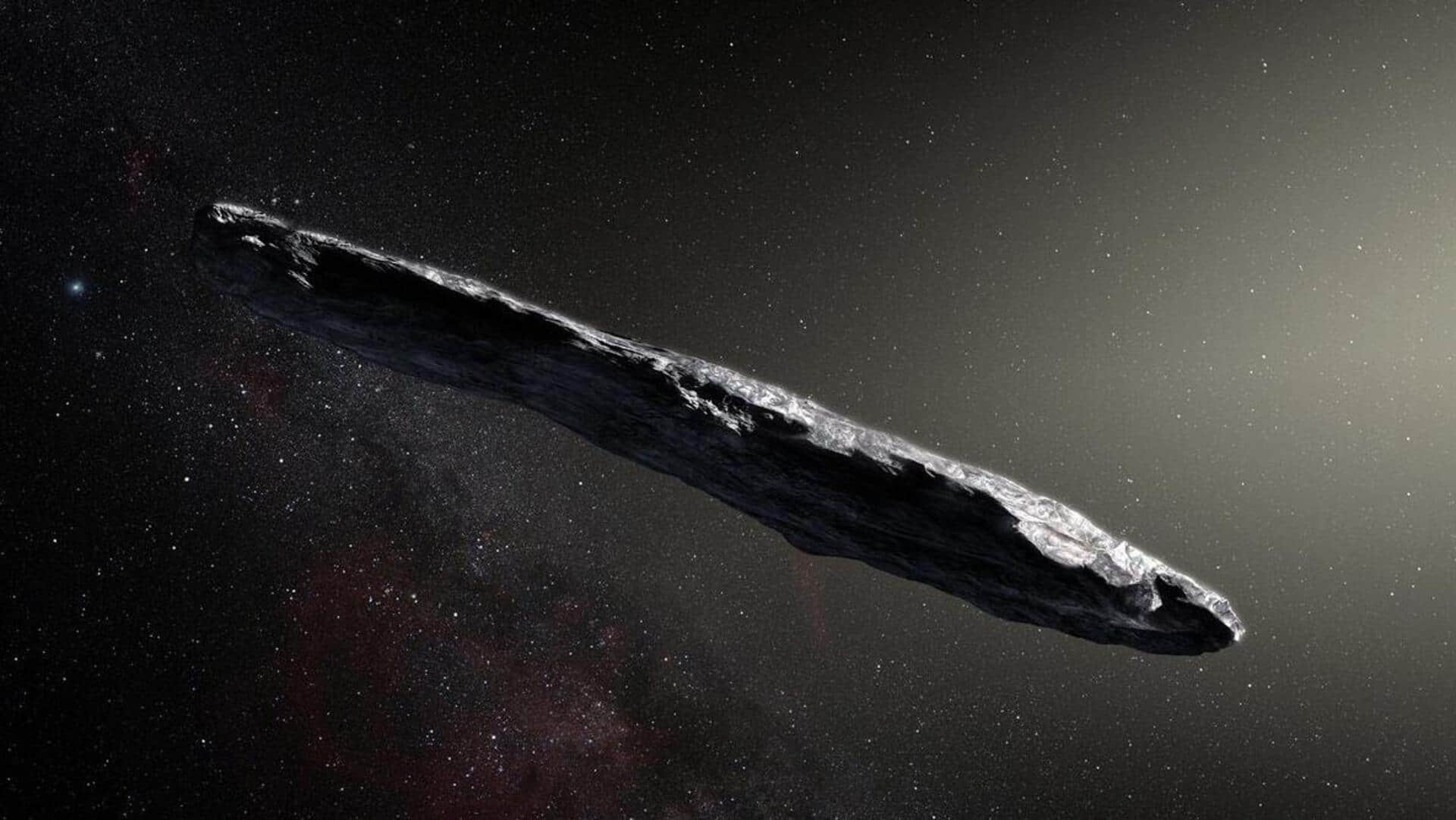
Scientists close in on origins of interstellar objects
What's the story
We could be close to understanding the origin of the mysterious and rare interstellar objects (ISOs). These are cosmic bodies from interstellar space that travel through our solar system. New research suggests that the speed of ISOs could help uncover the kind of stars they come from and this in turn can help understand what they are made up of.
Findings
There are only two ISOs known to date
To date, there are only two ISOs that have been confirmed in our solar system. One is 'Oumuamua, discovered in 2017 and the other one is 2I/Borisov which was found in 2019. While 'Oumuamua did not show any signs of a cometary tail, 2I/Borisov has characteristics of a typical comet—a frozen body made of ice and dust that orbits the Sun.
ISOs
'Oumuamua has no dust trail
'Oumuamua was found to be in a hyperbolic orbit, meaning it's on a path that will not cross the Sun again. It's not considered a comet because there was no dust emanating from it. On the other hand, 2I/Borisov is observed to have both a coma and a tail. It also shows surprisingly higher levels of carbon monoxide than any other comet observed.
Predictions
There are potentially thousands of ISOs hurtling through solar system
Although we know only two ISOs, there are potentially thousands of them shooting through our solar system right now. However, these cosmic bodies are kind of far to be detected. Most ISOs are believed to have started as comets orbiting other stars. However, an encounter with a giant planet like Jupiter can send these objects into interstellar space.
Explanation
Stars have their own pace around their point of origin
Stars move at their own speed in the Milky Way galaxy. They sync up to form moving groups around their source of origin. At the "thin disk" of the galaxy, stars with the heaviest elements, like our Sun, are found. Around this layer is the "thick disk," which is mostly home to older stars with fewer heavy elements.
Information
ISOs share similar velocities as their parent star
The groups of stars that lie in the different disks of a galaxy have different velocities. ISOs that are ejected from stars with similar velocities will tend to stick together, forming moving groups.
Detail
ISO's with different velocities cross Sun's path all the time
However, ISOs that are ejected from stars with different velocities will travel in different directions, forming moving groups that criss-cross the Sun's path. "The Sun is essentially running into them," said Matthew Hopkins, from the University of Oxford to space.com. So we should expect to see ISOs coming from "solar apex," which is the direction of the Sun's motion relative to other nearby stars.
Conclusion
Most ISOs are expected to come near the solar apex
"'Oumuamua was very close to the solar apex," said Hopkins. "Borisov was slightly farther away but still quite near [to the solar apex], and that's where we expect most of them to come from." Astronomers expect if the ISOs are traveling from that direction, they will be able to spot them using the Vera Rubin Observatory, which is currently under construction in Chile.
Official words
'My results show an ISO's velocity correlates with its composition'
An ISO's velocity respective to its host star depends on whether it originates from a thin disk that has more heavy elements or a thick disk with fewer heavy elements. "My results show that the velocity of an ISO correlates with its composition, and because of this we can get a handle on the types of star they may have come from," said Hopkins.
Information
Vera Rubin Observatory can spot and reveal more about ISOs
Since we know only two ISOs, there is a lot that astronomers are not completely sure of. However, once the Vera Rubin Observatory starts operations, which is expected to happen in October this year, we can expect to find out more about the mysterious ISOs.